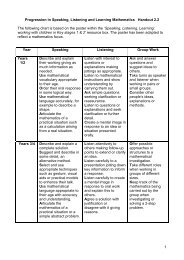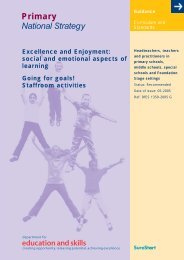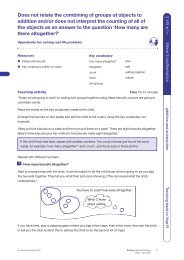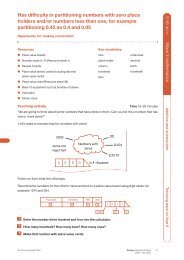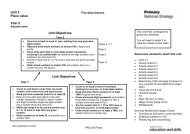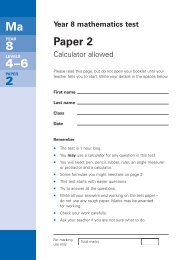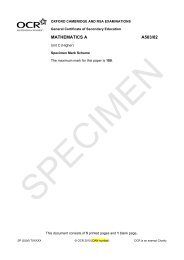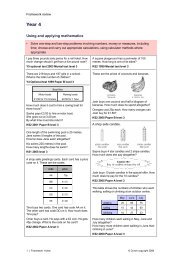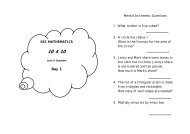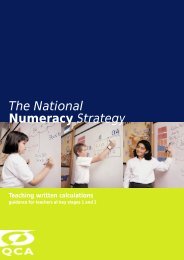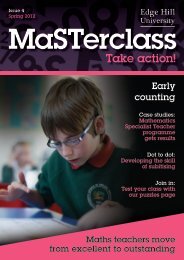Year 3 Block A: - Suffolk Learning
Year 3 Block A: - Suffolk Learning
Year 3 Block A: - Suffolk Learning
You also want an ePaper? Increase the reach of your titles
YUMPU automatically turns print PDFs into web optimized ePapers that Google loves.
20 of 20 The National Strategies ⏐ Primary<strong>Year</strong> 3 <strong>Block</strong> A: Counting, partitioning and calculating• Use practical and informal written methods tomultiply and divide two-digit numbers (e.g.13 × 3, 50 ÷ 4); round remainders up or down,depending on the contextI can use the tables facts that I know to workout division factsI can multiply or divide a two-digit number by aone-digit numberIf there is a remainder when I divide, I can workout whether to round the answer up or down• Actively include and respond to all members ofthe groupI can explain my solutions and methods toeveryone in a groupWhat is 4 × 2? What is 10 × 2? How could we usethese facts to work out 14 × 2?Tell me two multiplication facts we could use towork out 16 × 2. What is the answer?What is 20 ÷ 2? What is 6 ÷ 2? How could we usethese facts to work out 26 ÷ 2?Tell me two division facts we could use to work out28 ÷ 2. What is the answer?What is 70 ÷ 5? Here are 72 cubes. Put them intogroups of five. How many groups have you made?How many are left over?If you put the 72 cubes into boxes that hold fivecubes, how many boxes would you need? Explainwhy.If you put the 72 cubes in rows of five, how manyrows could you make? Explain why.What do you think of Asif's method of doing thatcalculation? Is it quicker or slower than yourmethod? Is it easier or more difficult than yourmethod? Why?Tell everyone about the method you used. Explainto the group why you chose that method to use.00543-2008DOM-EN-11 © Crown copyright 2009



